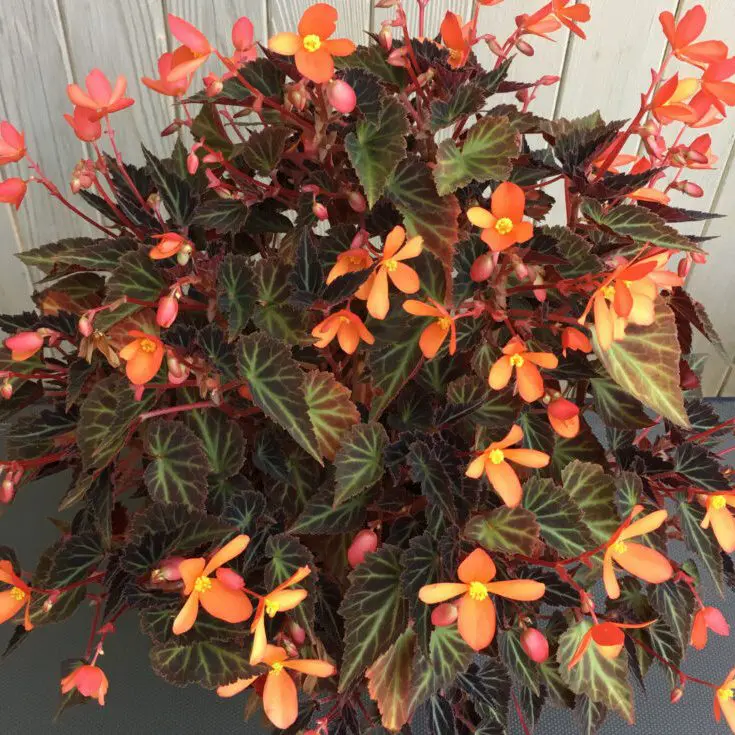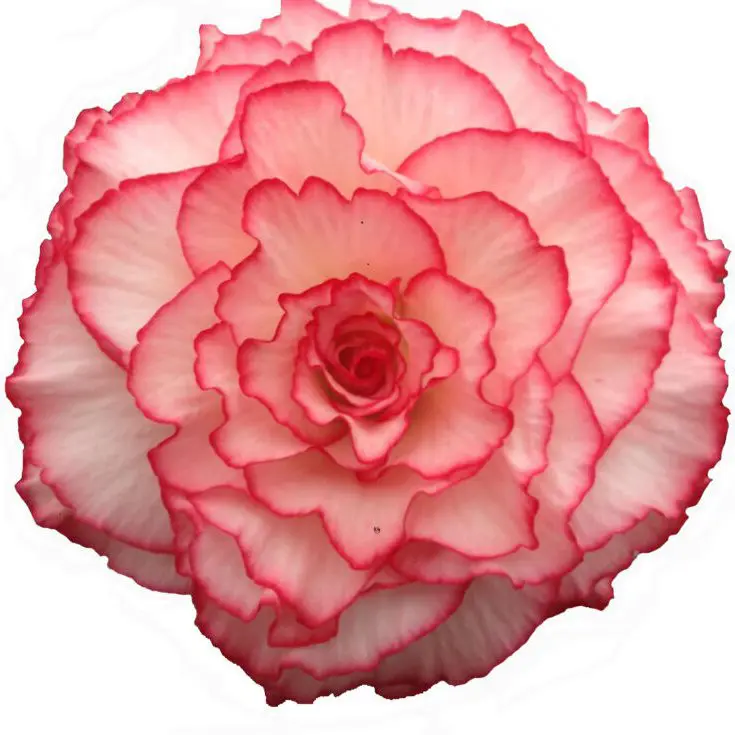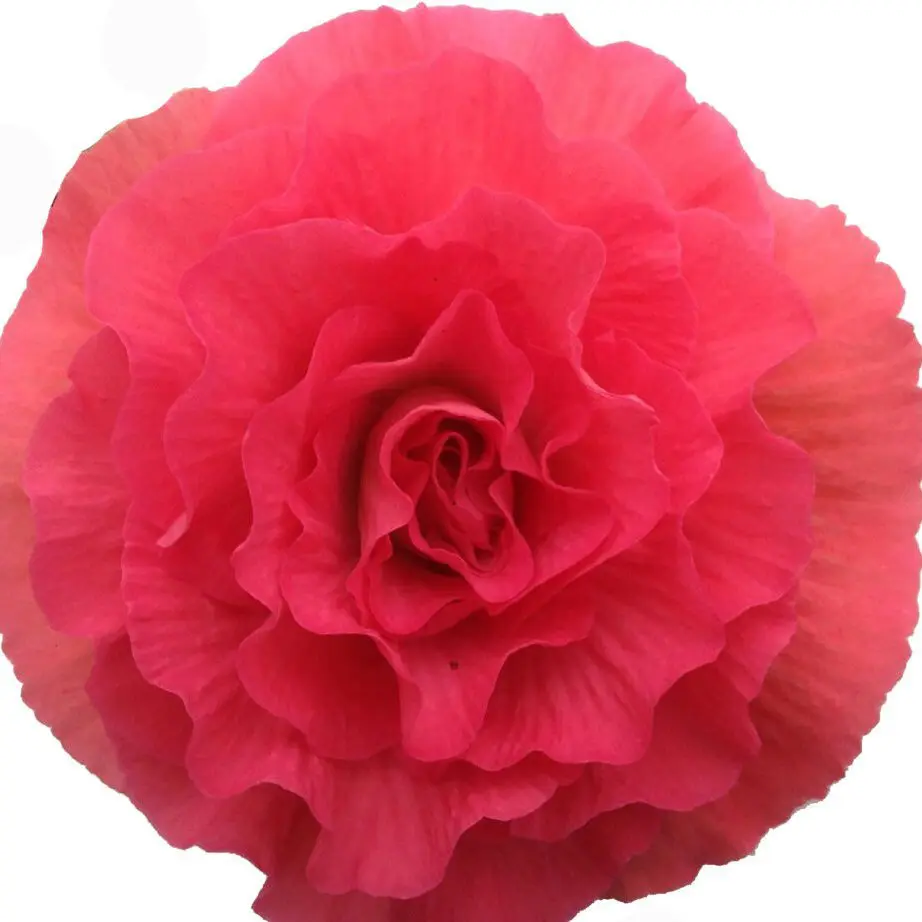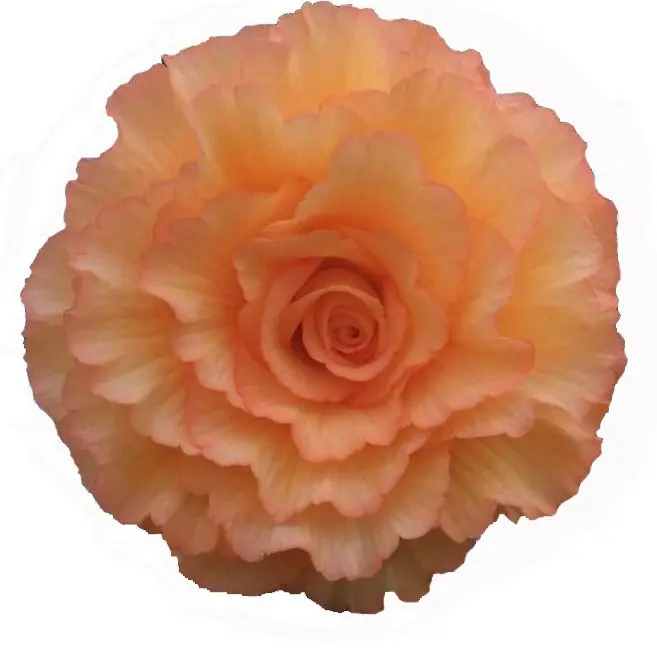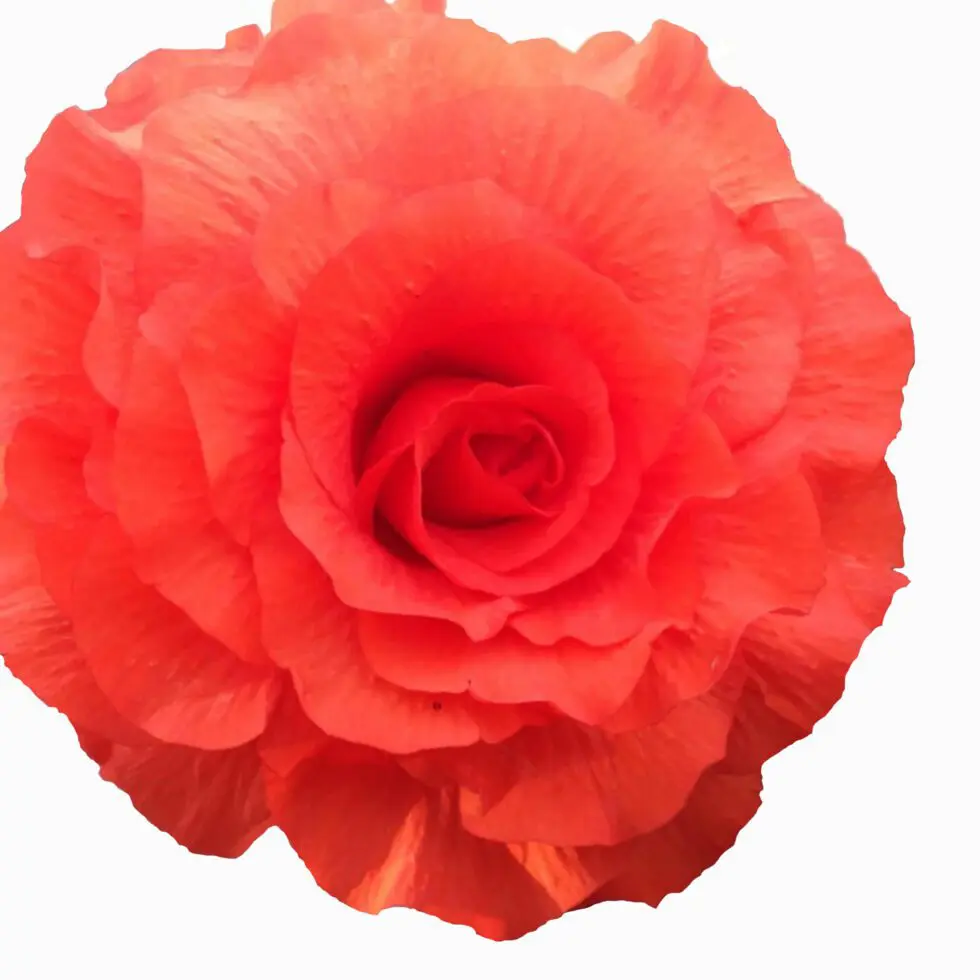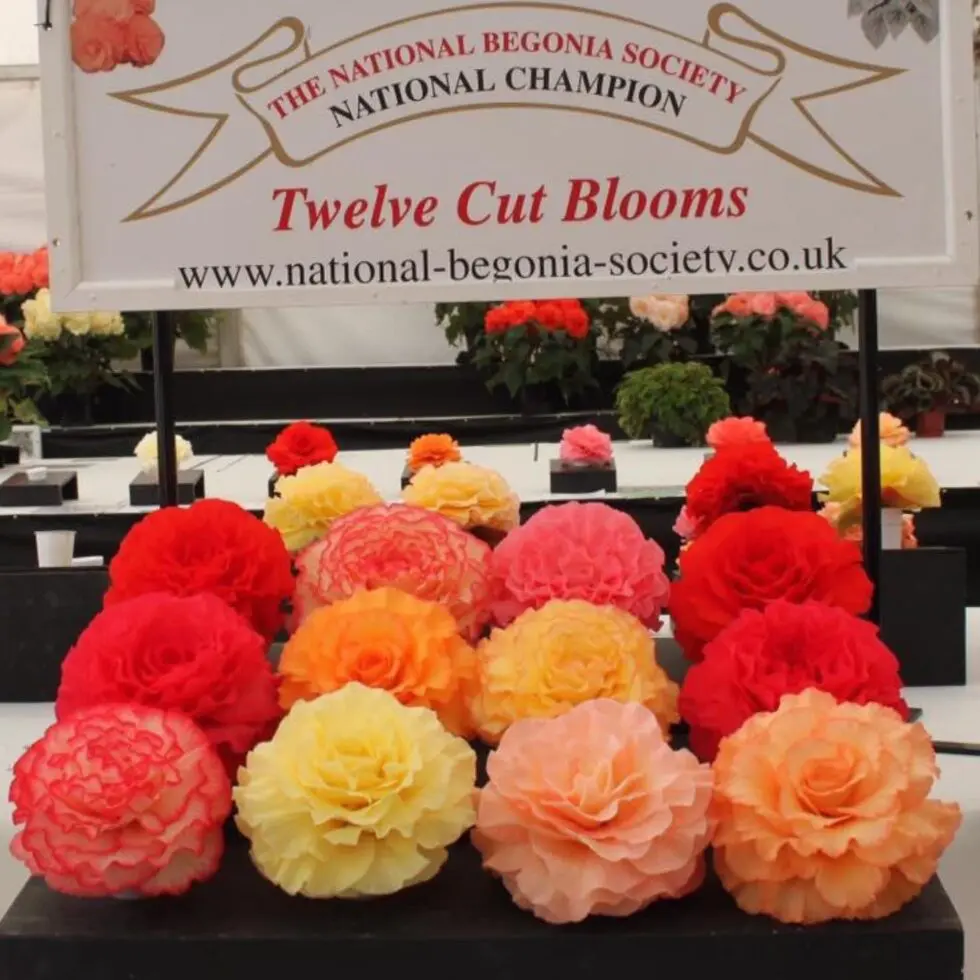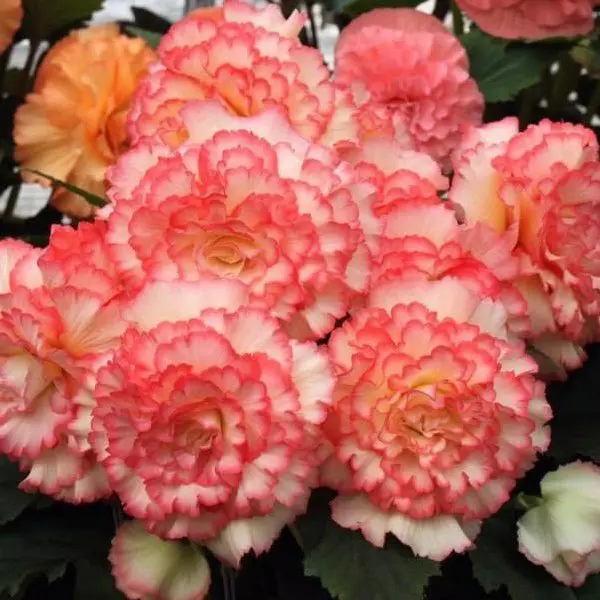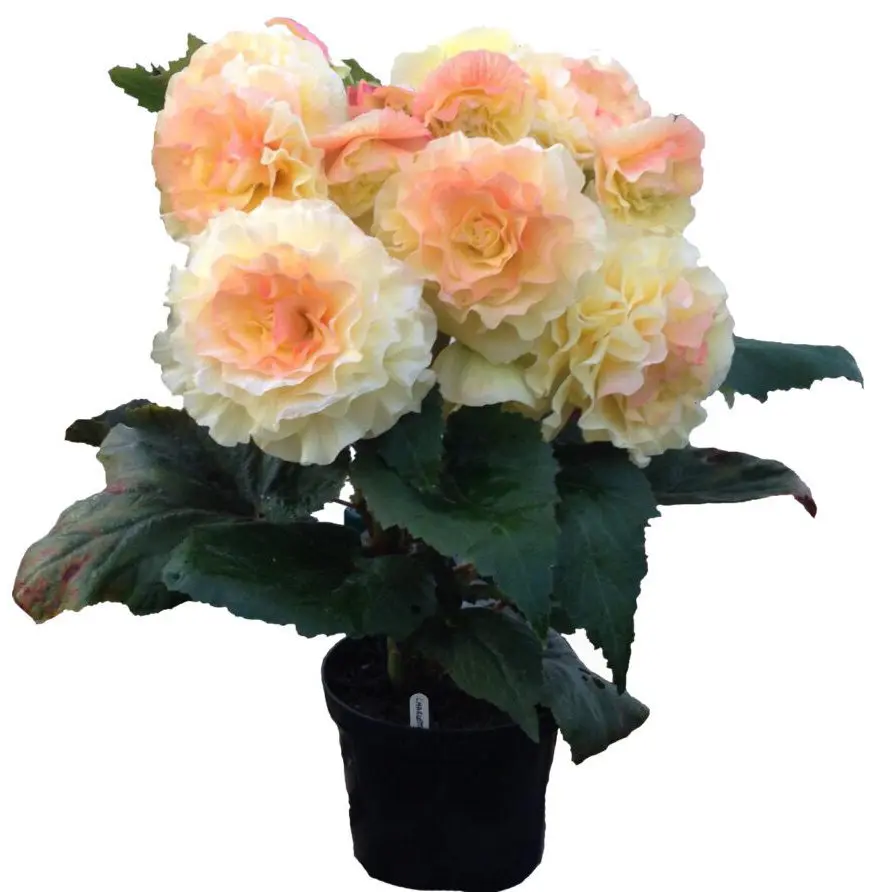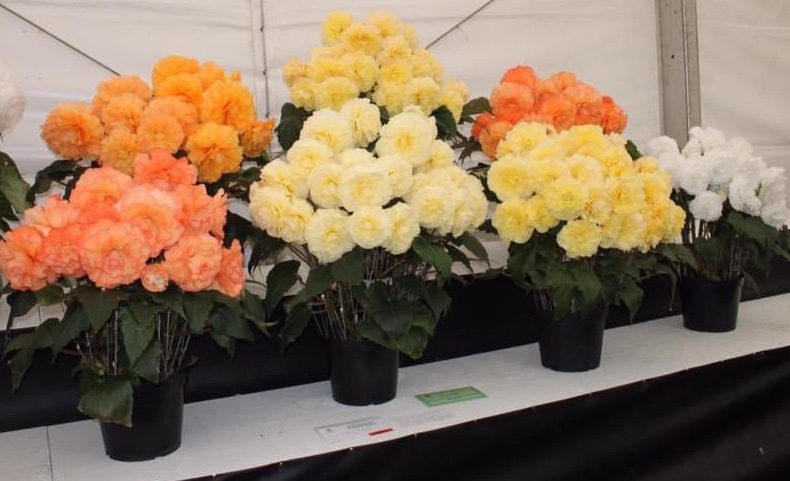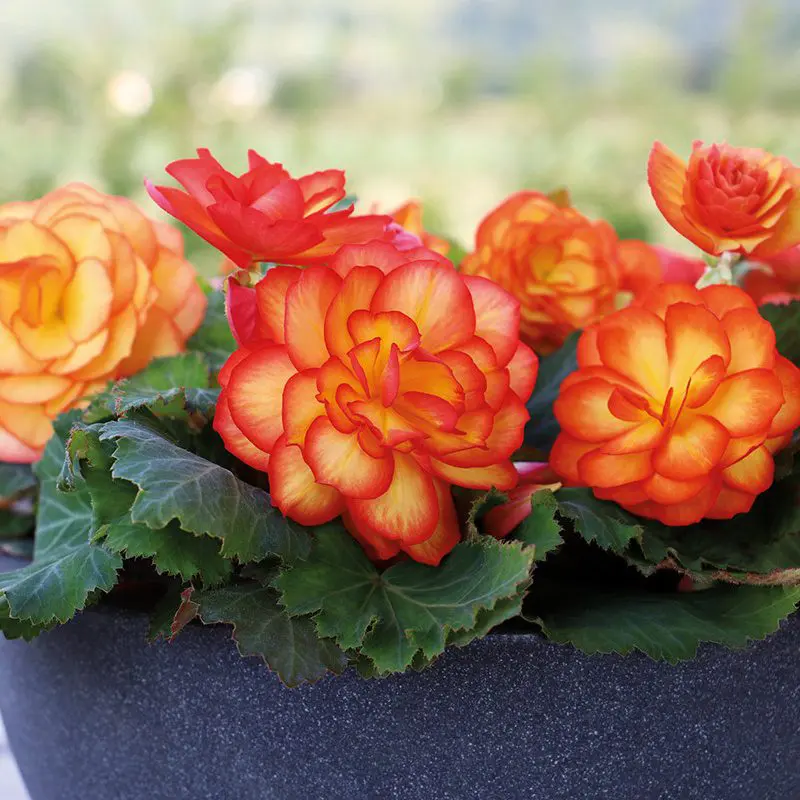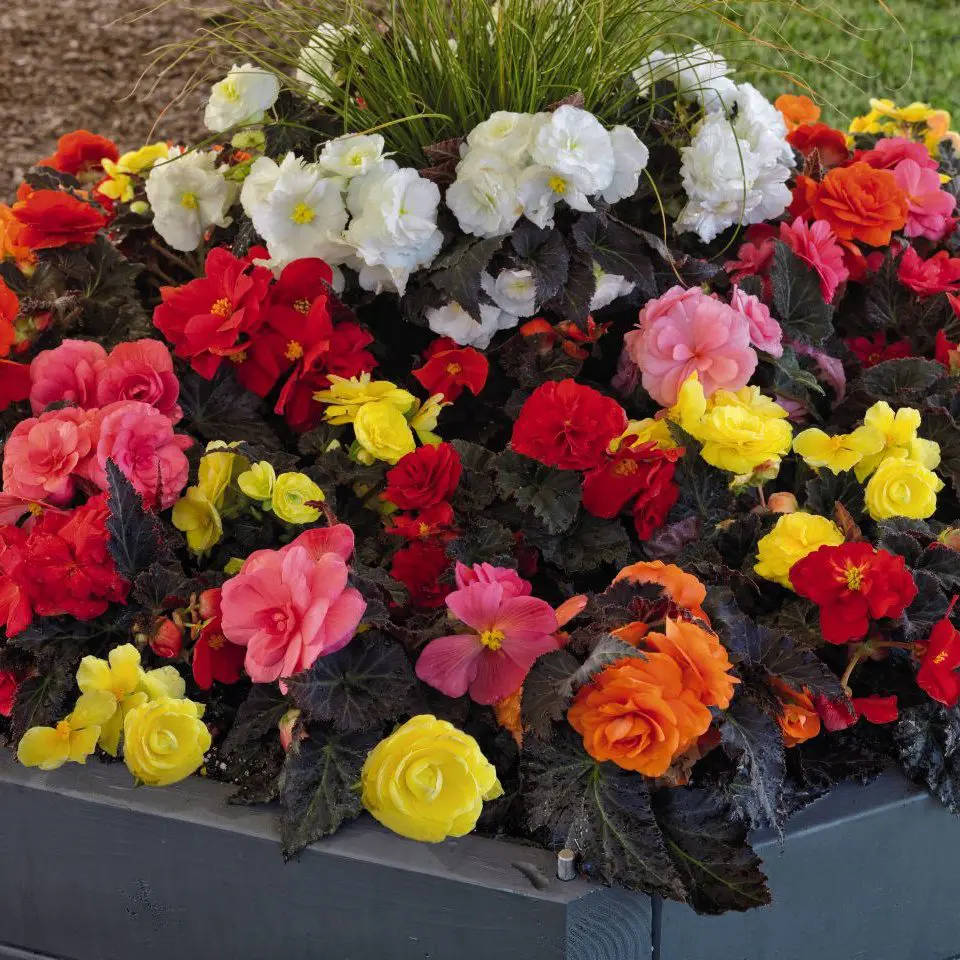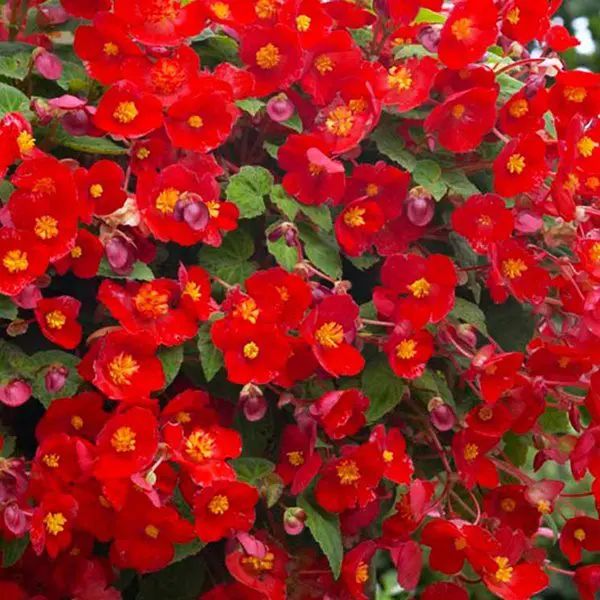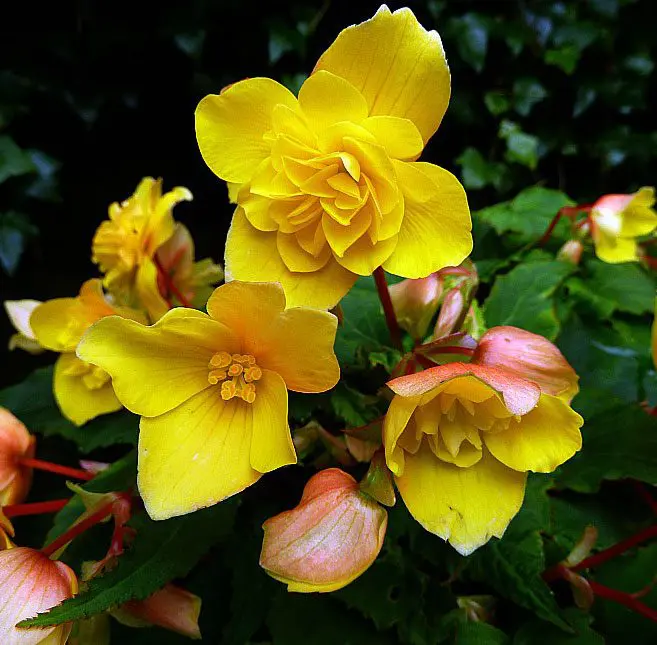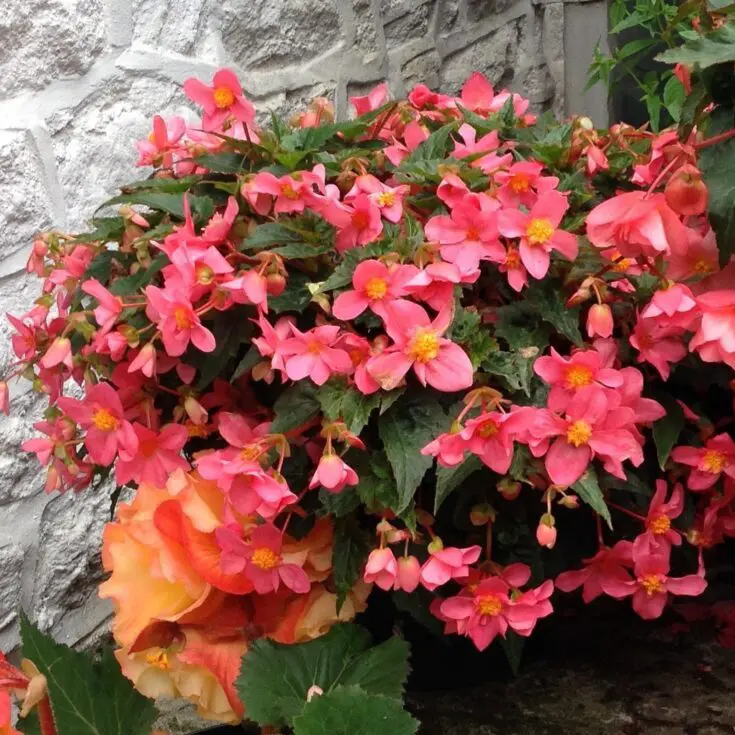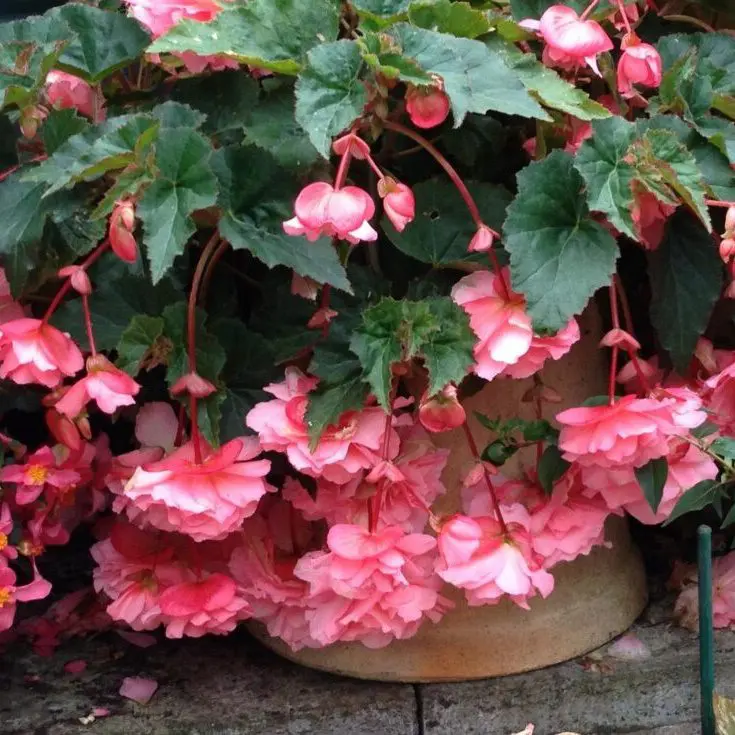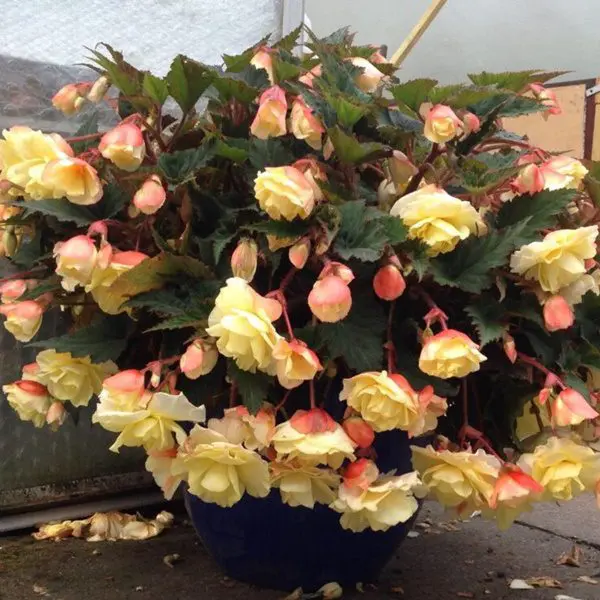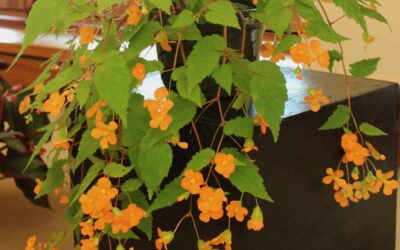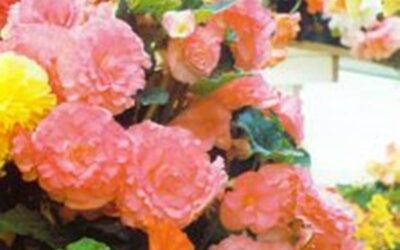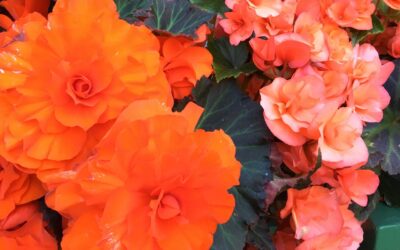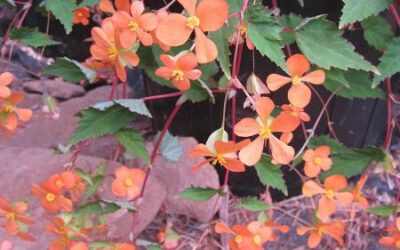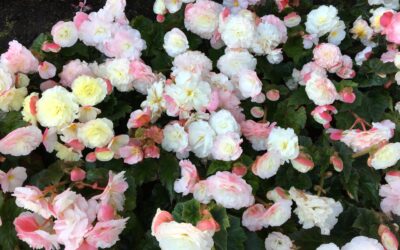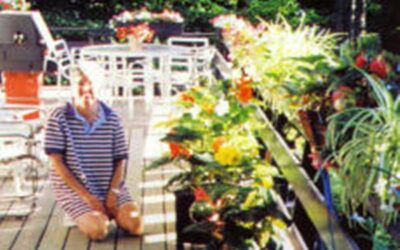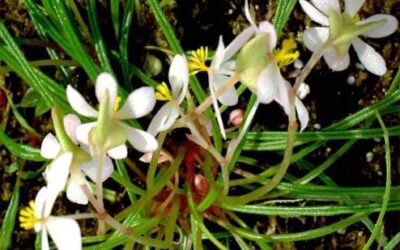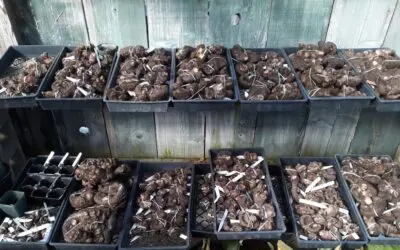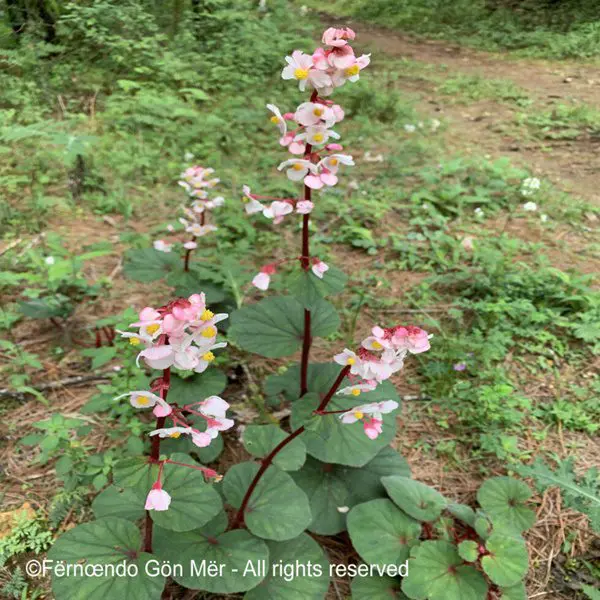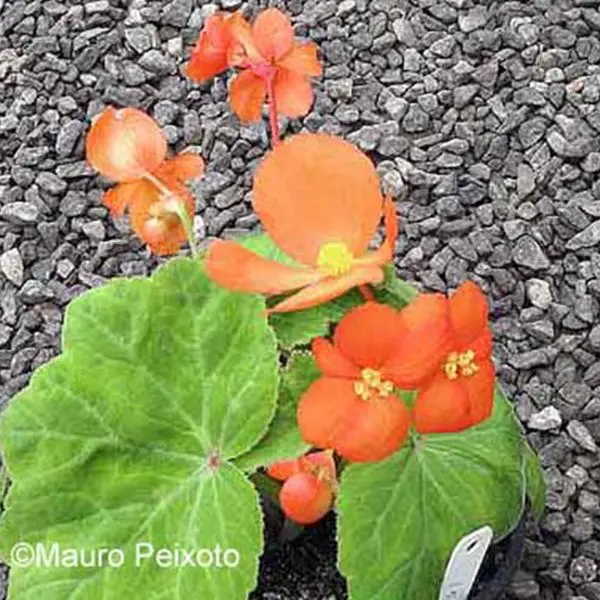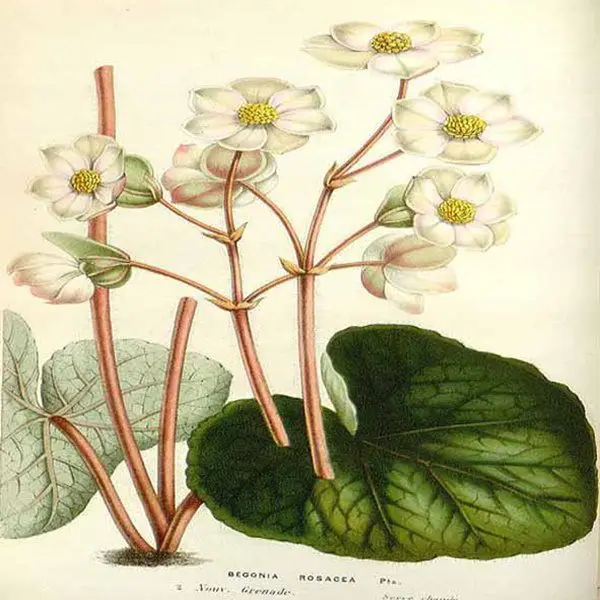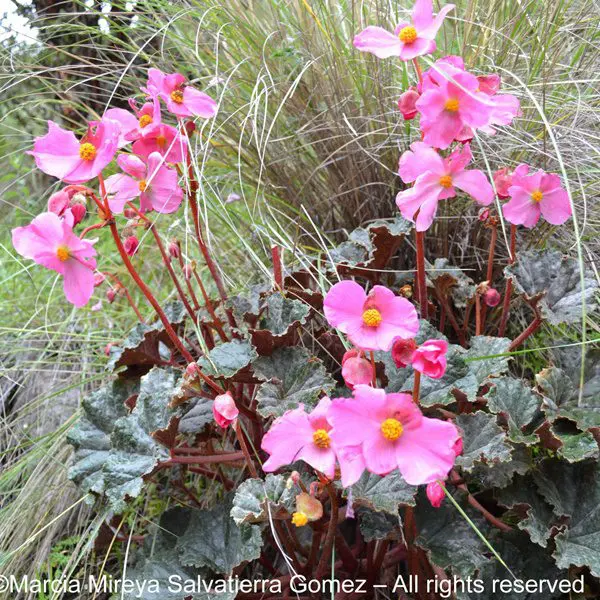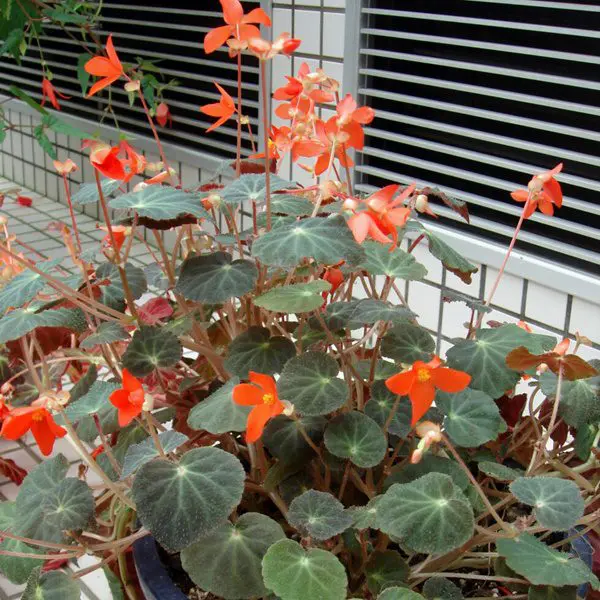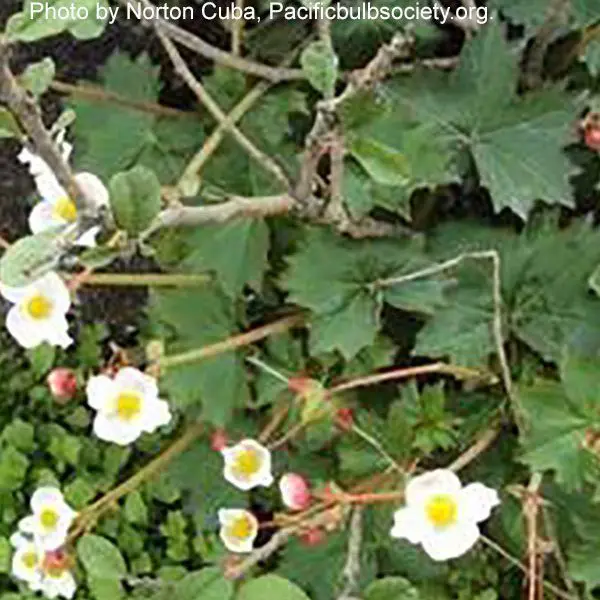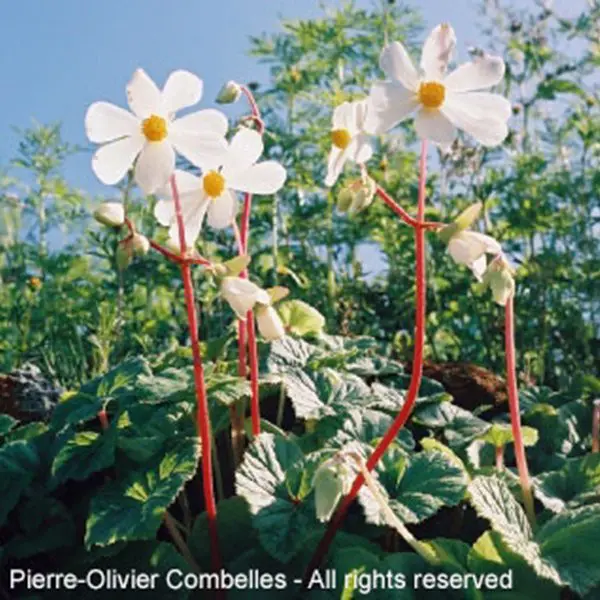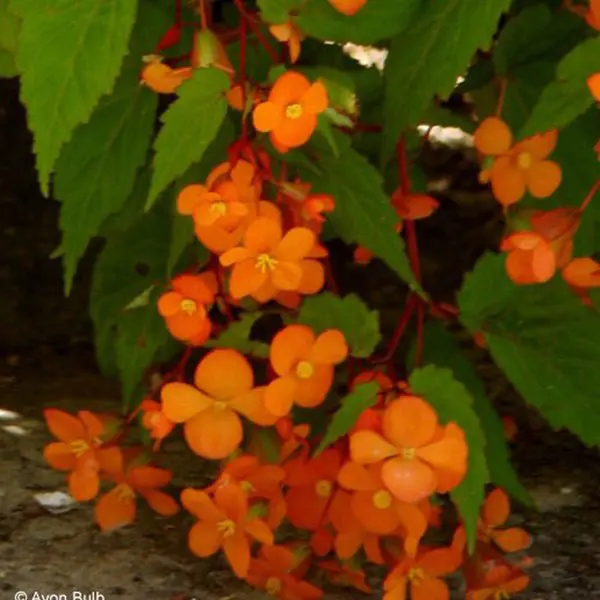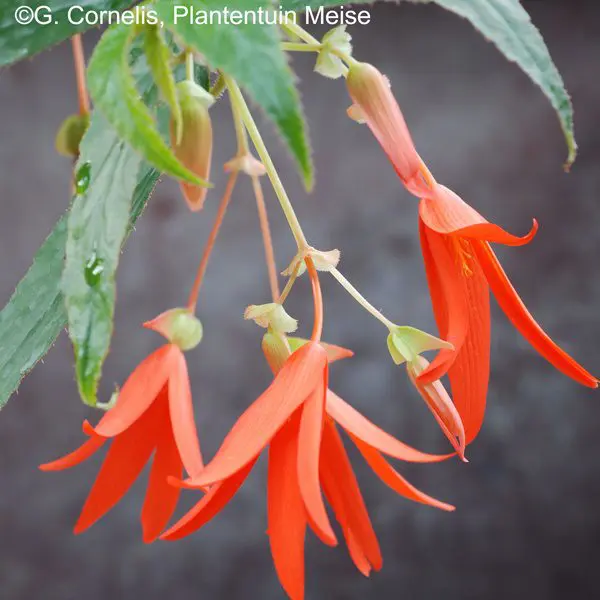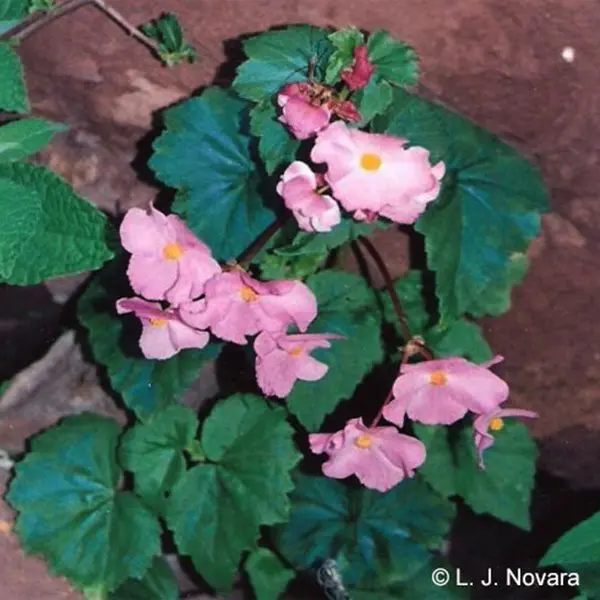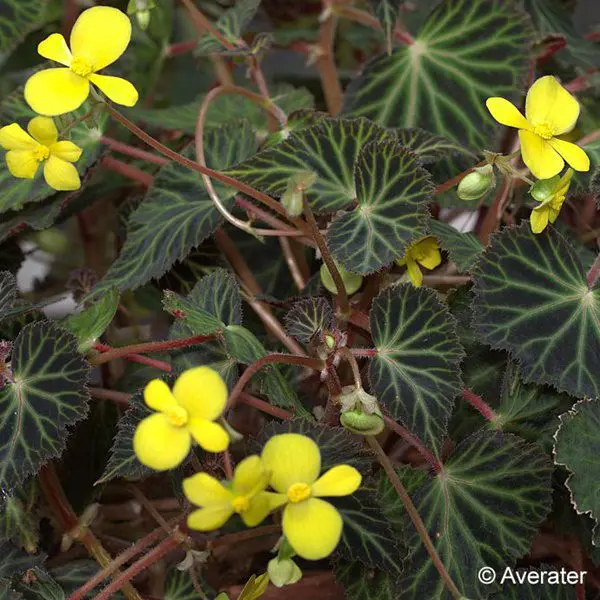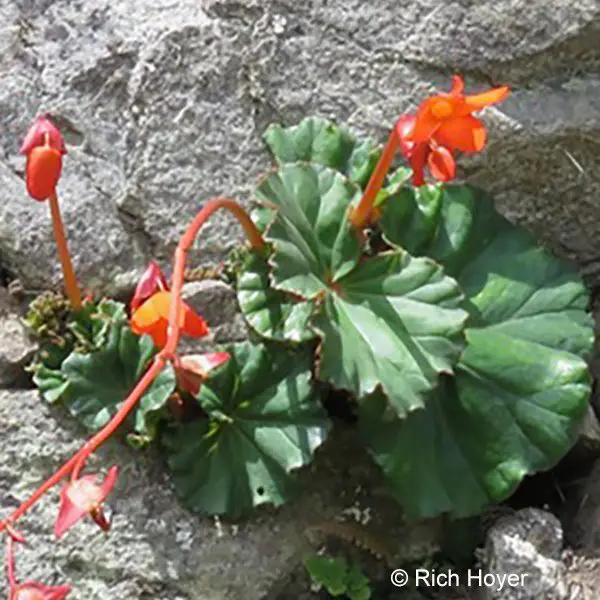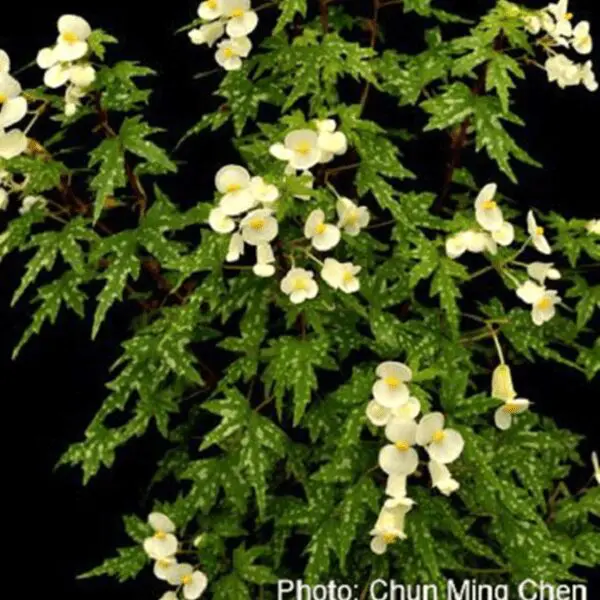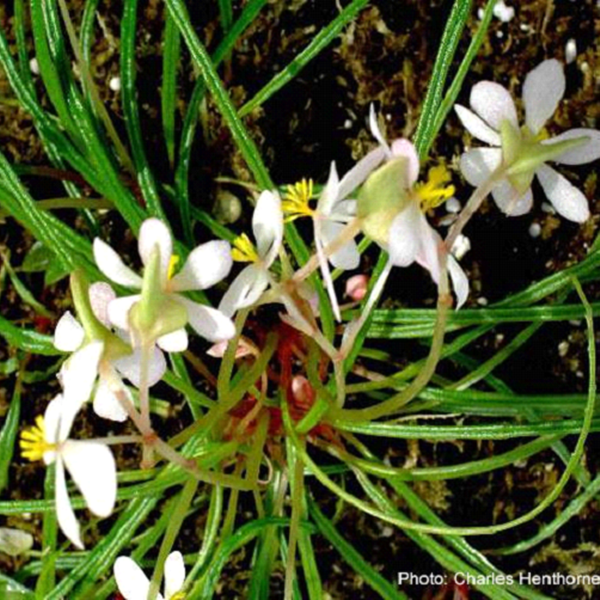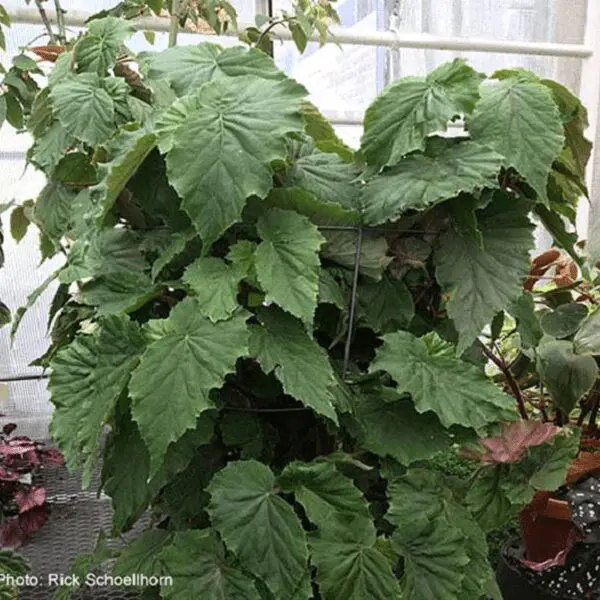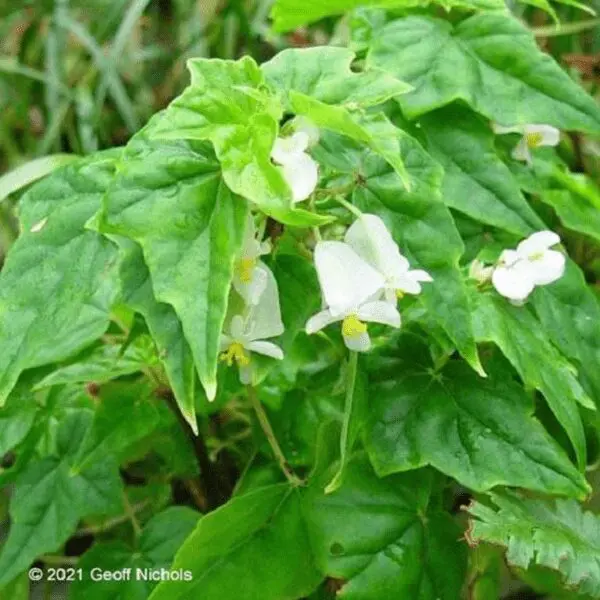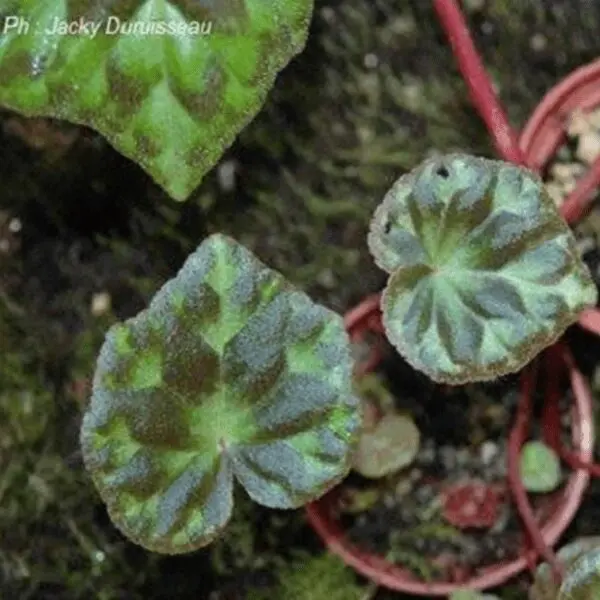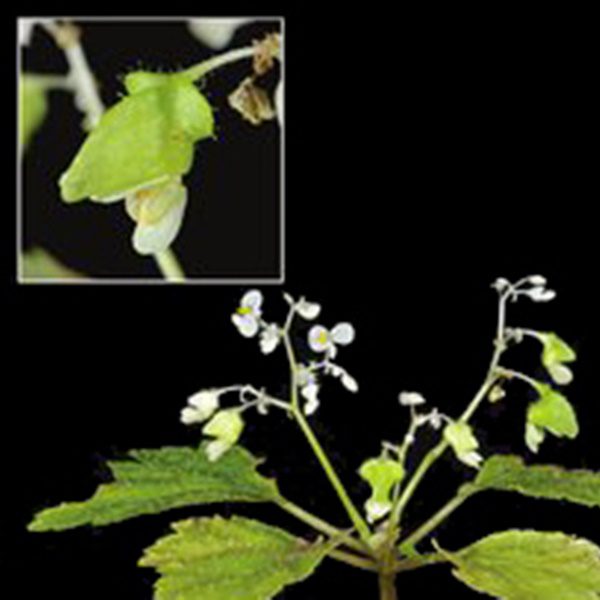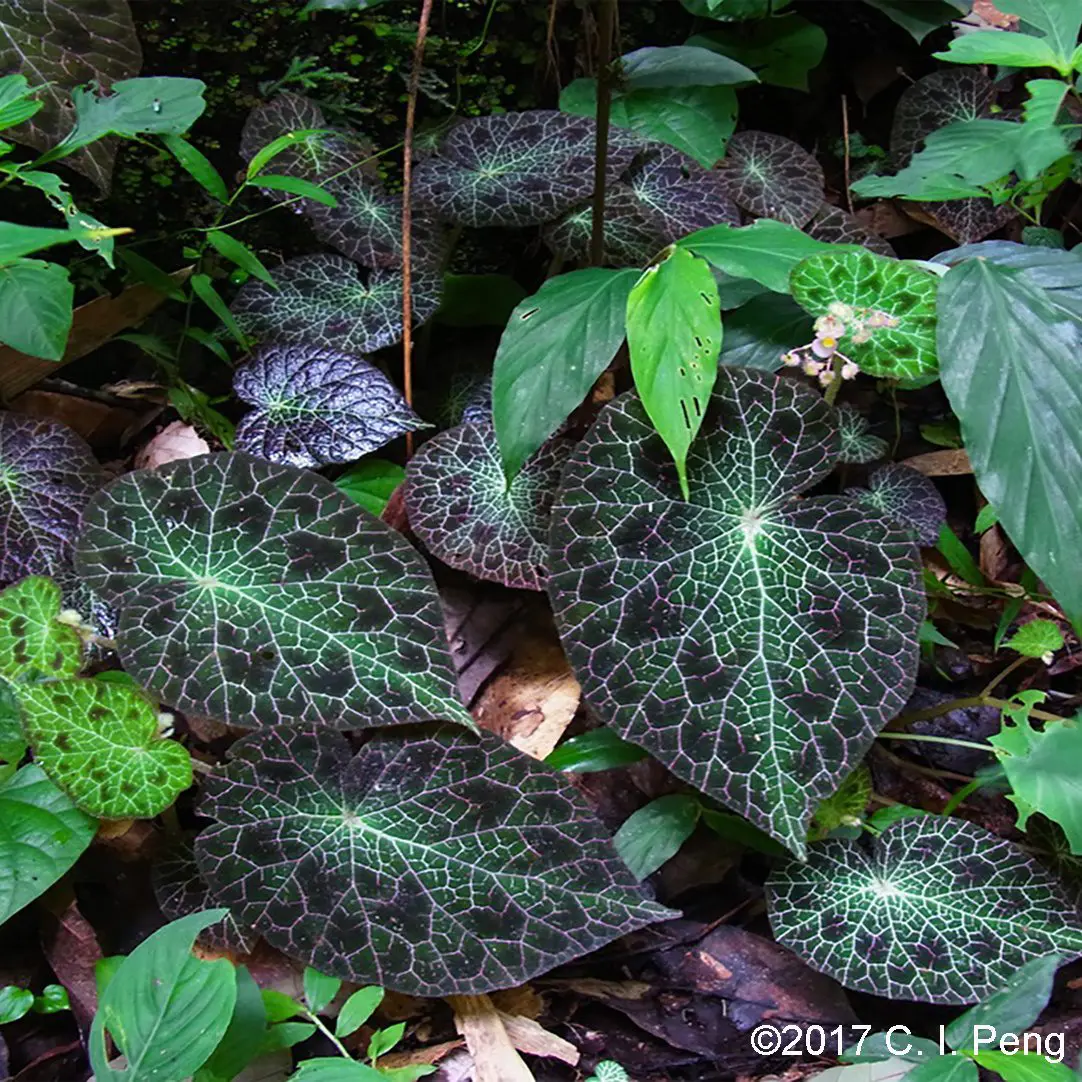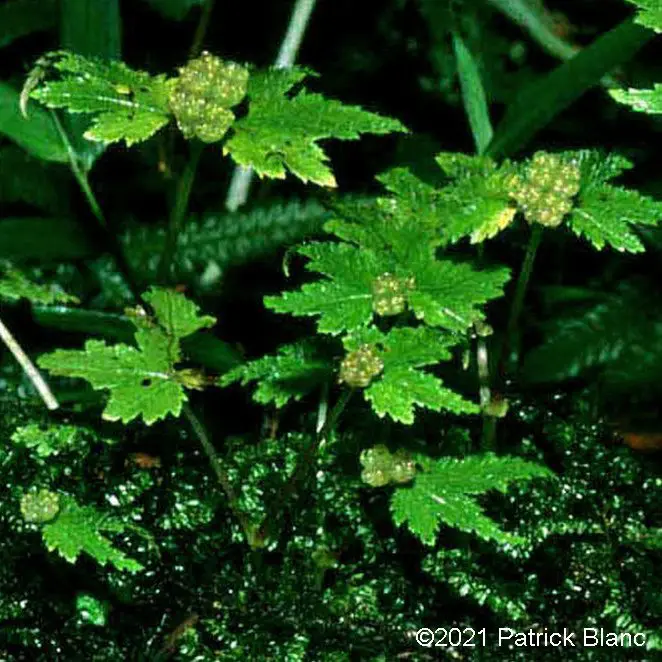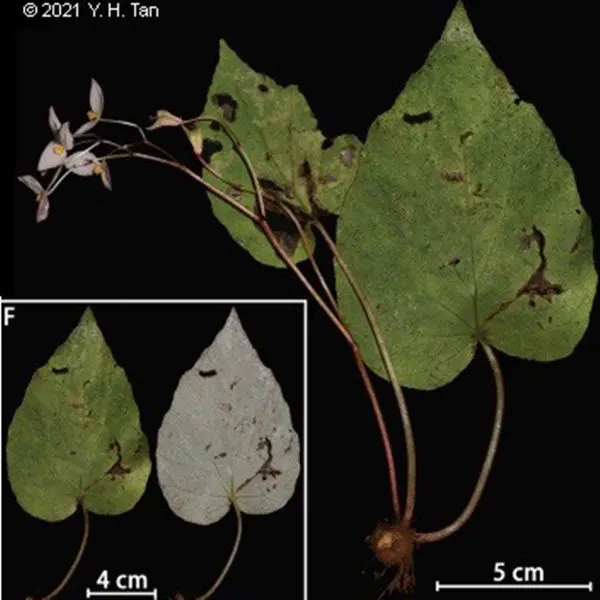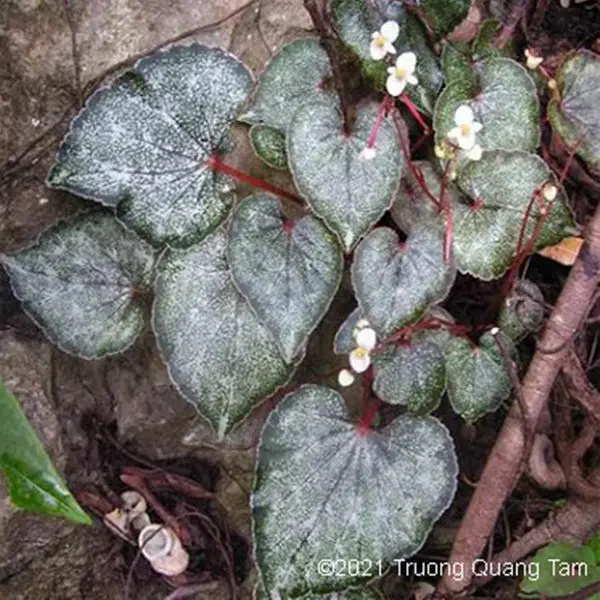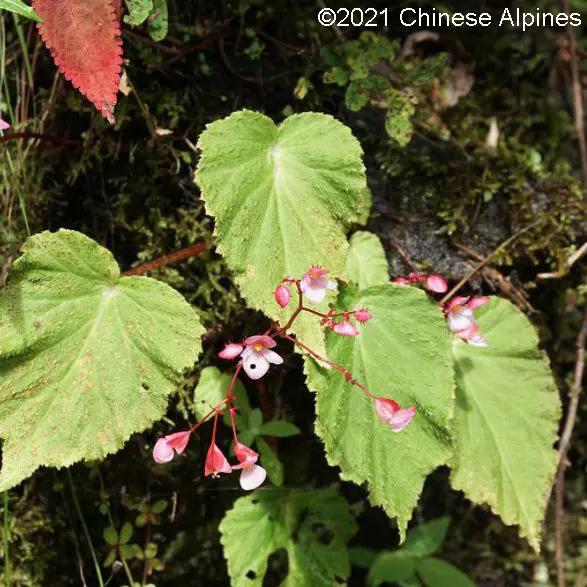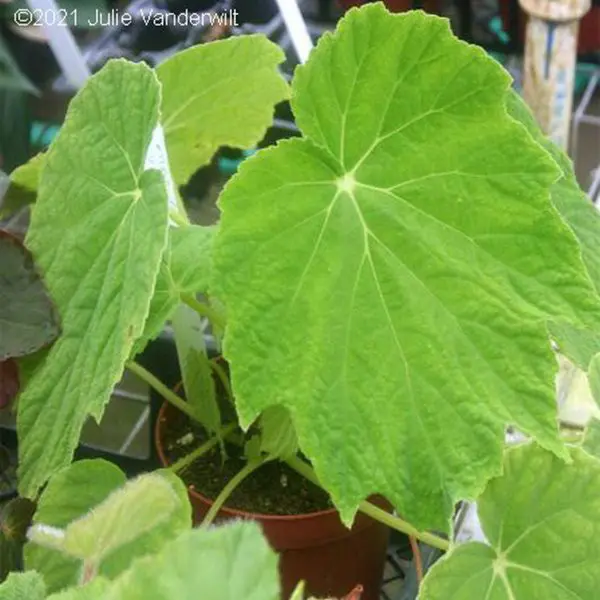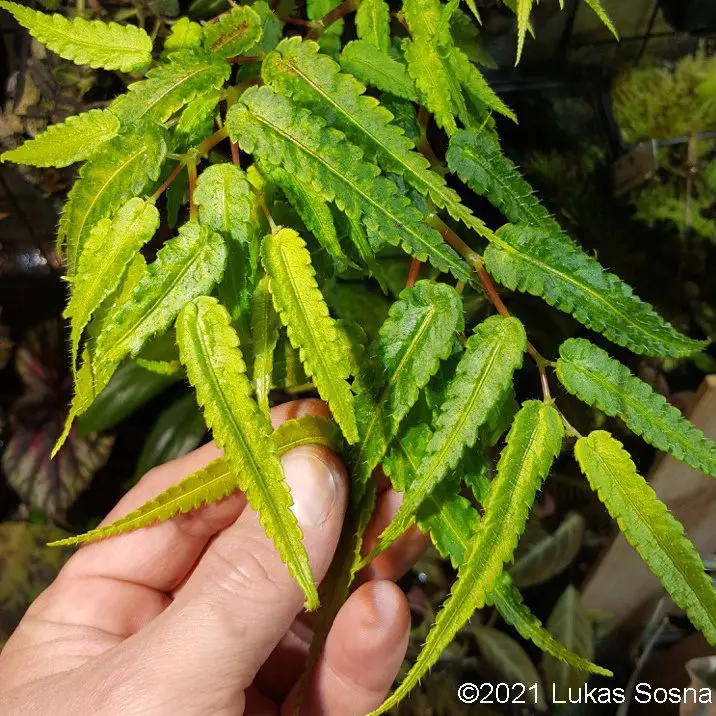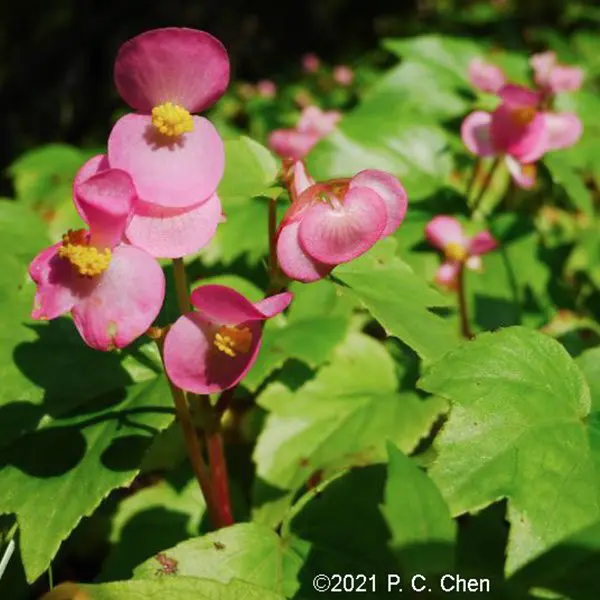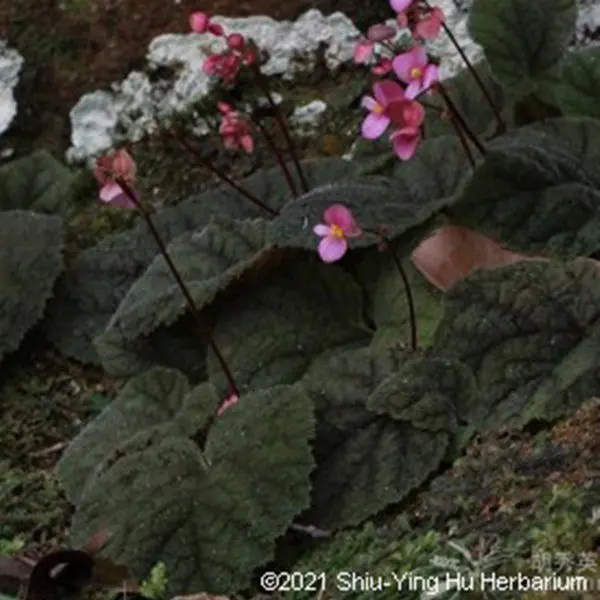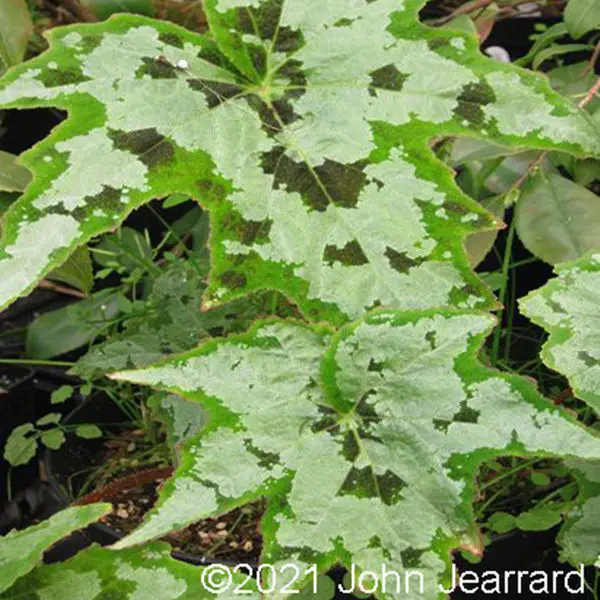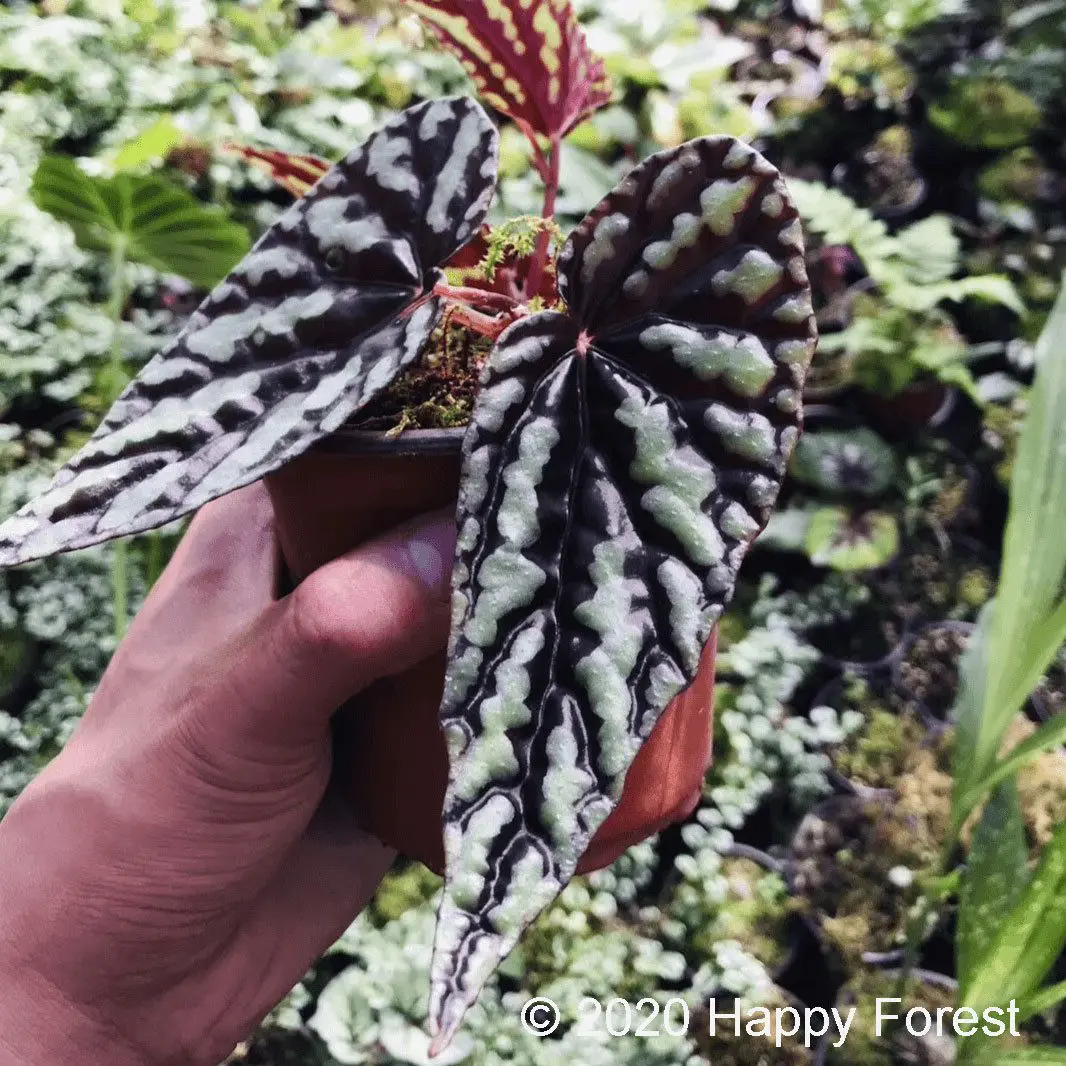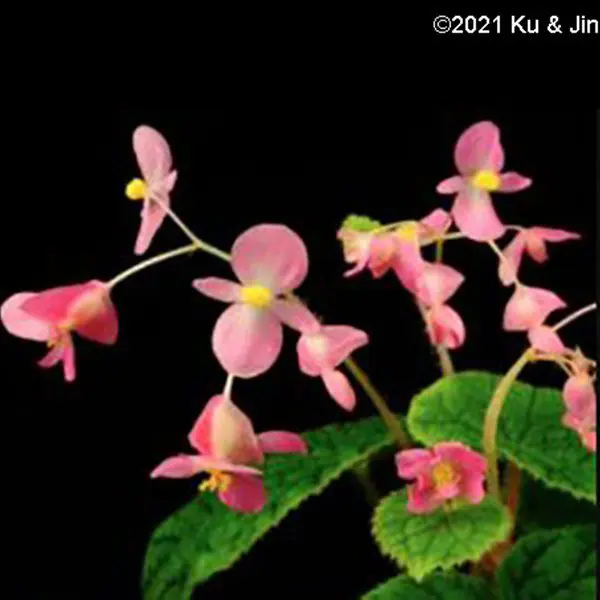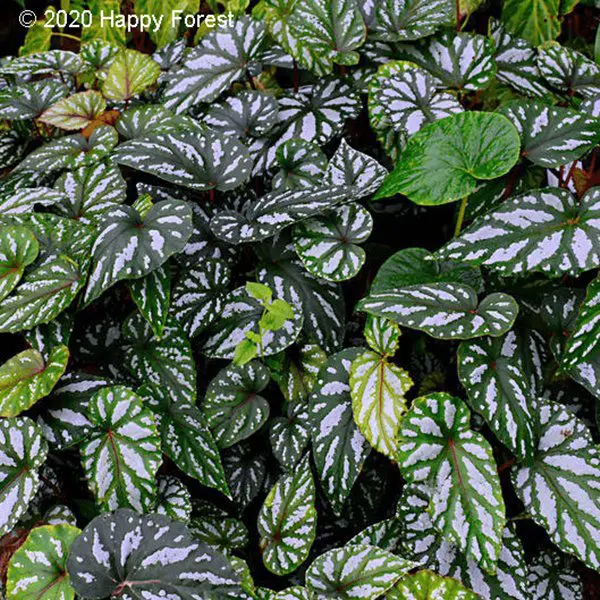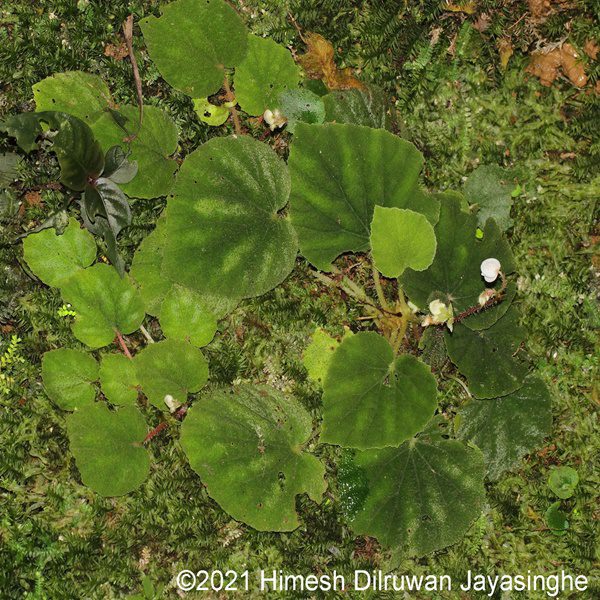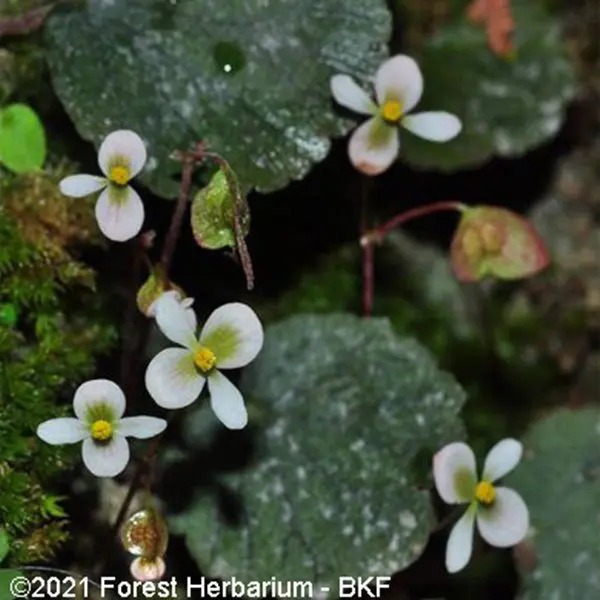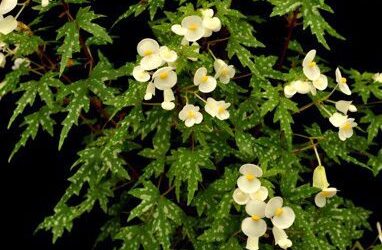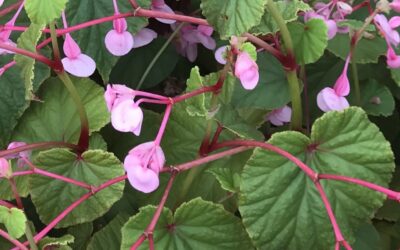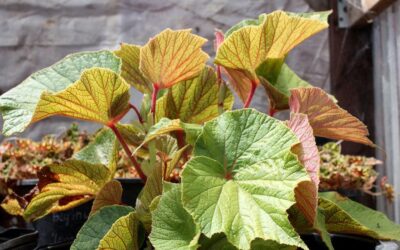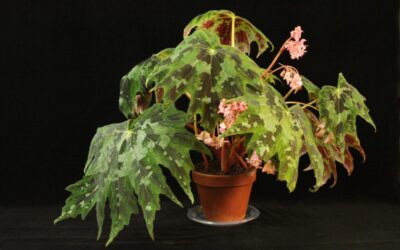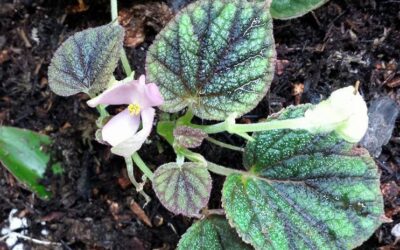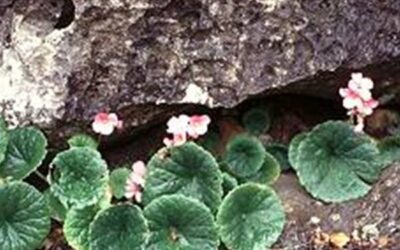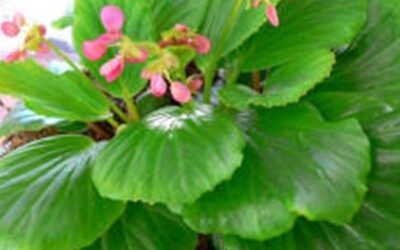Hybrid tuberous begonias come in a wide variety of shapes and sizes. These are hanging, or pendulous, forms of the ×tuberhybrida group. These are known for their cool temperature preference and wide variety of colors and flower shapes.
Tuberous Begonias
There are many different tuberous types of begonias. Most produce tubers as the growing season ends and the dry, or winter season, begins. The tubers, and dormancy, help get these plants through the difficult growing periods each year.
- The ×tuberhybrida types are complex hybrids, created almost entirely from high altitude Latin American species, and so prefer cool climates to grow in.
- There are many tuberous types from other parts of the world, however, that like warmer climates. Even now, there is still much discovery in these types of plants and new information to learn.
The ×tuberhybrida types
This is the glorious flowering group of begonias, with the largest flowers, and the widest range of flower colors and shapes. These plants prefer cooler climates and long days to bloom at their peak. The culture of tuberous begonias takes a bit of practice, but is incredibly rewarding. Tuberous types are grown for their flowers, but a few types have interesting leaves as well.
The Giant Flowers
Interest in breeding and growing the very large-flowered types changes with time, and it is specialized and requires a distinct group of Begonia ×tuberhybrida genetics. Specific growing techniques are necessary. England and New Zealand Begonia societies are currently the leaders in these large exhibition types. There are even bicolor flowers and some are scented.
Two plants grown for the exhibition category ‘Single Stem 3 side shoots’. Left: B. ‘Heather Lowe’, on right: B. ‘Charlotte’. Below a show grouping from Mairi Hamilton containing from left to right: B.‘Vera Coates’, ‘Charlotte’, ‘Fair Maid Of Perth’ ×2, ‘Whispers’ and ‘Billie Langdon’| Photos: Phil Champion
Tuberous for garden planting
A new seed-produced line of ×tuberhybrida begonias has been produced which yields 2-3” blooms, but on squatter, tougher plants than the giant types. The Nonstop® series and others of this type are popular with commercial growers as they are mass produced from seed, and not propagated from tubers.
Multiflora types
These are smaller flowered, but covered in blooms. They must be grown from cuttings and so are less common, however, they are stunning plants when grown in a cool climate. For more information on varieties check the National Begonia Society’s page.
Pendula types
The hanging basket forms of ×tuberhybrida are mid-sized flowers (2-3”) and when grown in cool climates are very dramatic with flowers up to 3” across and featuring brilliant colors.
Two pendulous ×tuberhybrida types (B. ‘Isabella on the left, and B. ‘Lou Ann’ on the right) showing the downward facing blooms typical of this category which is primarily used in hanging baskets and wall planters. | Photo: Phil Champion
Articles About xTuberhybrida Begonias
Begonia sutherlandii
This plant was described by J.D.Hooker in 1868. It comes from an elevation between 3,500 and 5,000...
Begonia Growing in New Zealand
by Ian McNeur Being a narrow island country between latitudes 341 and 480 south, New Zealand has a...
Tuberous Begonias: Most Spectacular Flowers
A group of ×tuberhybrida blooming at Butchart Gardens, Victoria BC.Spectacular and diverse, the...
Spotlight on: B. sutherlandii
B. sutherlandii is a native of Natal, and was discovered by P.C. Sutherland, in 1864…
It’s Easy to Grow Tuberous Begonias
SOIL PREPARATION:Tuberous begonias can survive in many types of soils. The most important factor...
Growing Tuberous Begonias in Michigan
Our routine is to place the tuber in lunch bags in separate cubicles of booze boxes…
B. bogneri
Ann Salisbury in this issue writes about strolling through The Begonian pages of the past…
Storing Tuberous Begonias for the Winter
Tuberous begonias have a winter dormant period that is determined by the day length, and in cold...
Species that went into creating Begonia ×tuberhybrida include:

Begonia boliviensis was discovered around the same time as the tuberous begonias used in creating the ×tuberhybrida, and was, in fact, one of the parents of that group as well. The species is easier to grow in many cases than the complex hybrids, and has more heat tolerance, as well as being easily produced from seed. All of these factors have made it a more popular plant for today’s gardens and hanging baskets. Picture above are: (left to right) Bossa Nova® ‘White’, ‘San Francisco’, Mistral™ ‘Yellow’, ‘Santa Cruz Sunset’, Million Kisses® ‘Elegance’, Mistral™ ‘Pink’.
Bolivian Begonias
Begonia boliviensis and its cultivars have recently become more popular, and are predominantly hanging basket types. The flowers are smaller than the ×tuberhybrida types, and with thinner, longer petals featuring a distinctly different look. This type is also more heat tolerant and can be grown in warmer climates.
New species being discovered
Mark Tebbitt, Ph.D. has dedicated much of his career to exploring the Andean begonias that were used to create Begonia ×tuberhybrida, as well as species that were not discovered in that initial exploration period. Dr. Tebbitt’s book Tuberous Begonias: A monograph of Begonia Section Australes, published by the American Begonia Society, is a documentary of this fascinating group of begonias as well as the first publication of many new species and natural hybrids.
Semi-tuberous types
Another related type of Begonia is the semi-tuberous which does not have a tuber, but which form a caudex, or swelling, at the base of the stem. Most semi-tuberous have small leaves and small white flowers, however, there are a few that feature pink flowers. These make almost a natural bonsai with their swollen base and small stems and leaves.
Tuberous Species from Asia and Eastern India
There are many new, and also older, species from Africa and Madagascar, Socotra to Northern India and Asia, all the way across the continent to China. Cliff dwelling species, near desert environments, to lush tropical jungles and higher elevations. As varied as the terrain that produced these tuberous species, this appears to be where the majority of new discoveries are occurring.
Articles About African & Asian Tuberous Begonias
Begonia dregei
This plant was discovered by J.F Drège in the Cape of Good Hope, South Africa in 1836, the same...
Begonia grandis ssp. evansiana
Begonia grandis ssp. evansiana is commonly called the hardy begonia because it can survive winters...
Begonia ‘Torsa’
This begonia is classified as ‘tuberous, first-generation hybrid, tall-growing’ by the Thompsons....
Begonia taliensis
B. taliensis is a tuberous species from China which grows in shrubberies or mixed forests at high...
Begonia picta
Begonia picta is a tuberous species that was discovered in the high Himalayan foothills. It was...
The Begonia of the Socotra Archipelago
As Freda Holley kindly included my request for material of Begonia socotrana and its hybrids in a...
Begonia ‘Pink African Violet’
by Charles Henthorne Over 30 years ago, when I first started to grow begonias, I heard about one...
B. guttata
At the 1994 "Begonias: OK!" Convention, Don Miller exhibited a plant called B. guttata. It was an...


